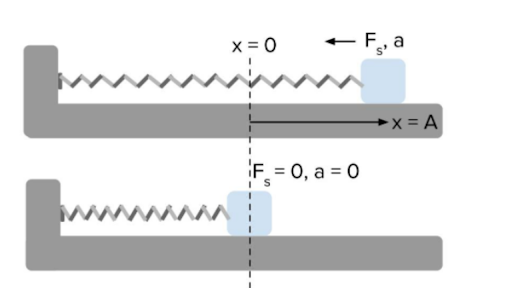Linear Simple Harmonic Motion Definition
Linear simple harmonic motion when a particle moves to and fro about a fixed point called equilibrium position along with a straight line then its motion is called linear simple harmonic motion.
Linear simple harmonic motion definition. Simple harmonic motion is the kind of vibratory motion in physics in which the body moves back and forth about its mean position. Examples of simple harmonic motion are. Linear motion is motion in a straight line. It is also called 1 d motion because you re moving in one dimension.
Linear motion is generally the easiest to describe. The motion of a pendulum for small displacements. The force or the acceleration acting on the body is directed towards a fixed point i e. It consists of a mass m which experiences a single force f which pulls the mass in the direction of the point x 0 and depends only on the position x of the mass and a constant k.
You just have one graph for. Balance of forces newton s second law for the system is. By definition simple harmonic motion in short shm is a repetitive movement back and forth through an equilibrium or central position so that the maximum displacement on one side of this position is equal to the maximum displacement on the other side in other words in simple harmonic motion the object moves back and forth along a line. In mechanics and physics simple harmonic motion is a special type of periodic motion where the restoring force on the moving object is directly proportional to the object s displacement magnitude and acts towards the object s equilibrium position.
Linear simple harmonic motion is defined as the motion of a body in which the body performs an oscillatory motion along its path. Simple harmonic motion is a type of periodic or oscillatory motion br the object moves back and forth over the same path like a mass on a spring or a pendulum br we re interested in it because we can use it to generalise about and predict the behaviour of a variety of repetitive motions br what is shm br 3. Any model with mass a linear restoring force and no friction supports simple harmonic motion with displacement proportional to sin ωt. A sheet fixed at one end and vibrating at the other end.
Real harmonic motions generally require an energy source to replace energy lost to friction and are only purely harmonic in the limit of infinitely small motion. Simple harmonic motion a simple harmonic oscillator is an oscillator that is neither driven nor damped.
